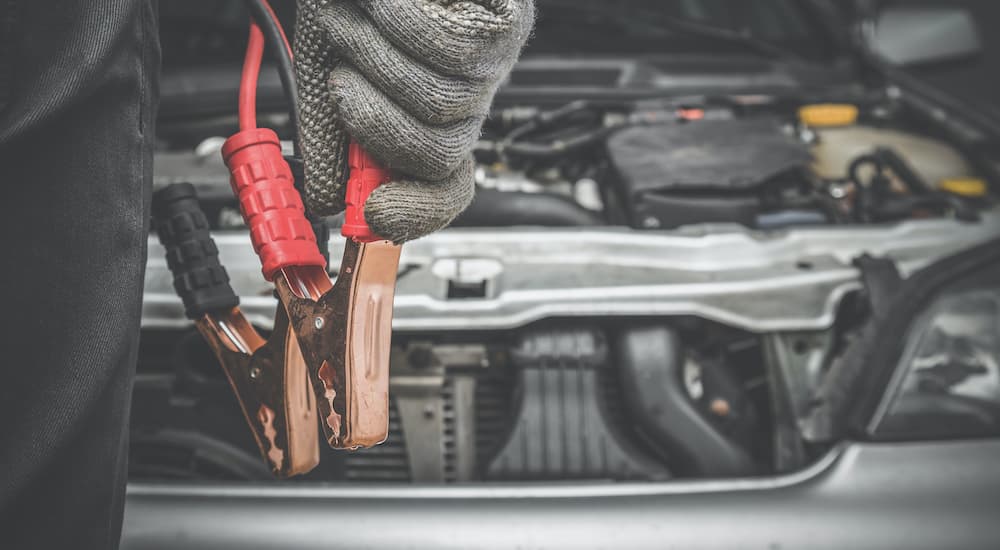We’ve all been there at one point or another during vehicle ownership – something has gone wrong, but you’re not really sure what. When an unexpected problem occurs, what do you do? The majority of people will take their vehicle to a mechanic who will figure out what’s wrong and correct it. That is a perfectly valid solution to the problem, but it can also be very costly for something you are able to do yourself. Diagnostic, labor, and parts can be expensive, especially when you take your vehicle to a shop that sets its own rates, including markup, flat rate prices, and other fees. And at the end of the day, you never really know what was done or how.
Many people are intimidated by the automotive world, but in reality, there are a lot of things you can take care of all by yourself. There are many advantages to learning some simple diagnostic skills and troubleshooting techniques.
- Money: You can save a substantial amount of money by tackling things yourself. There are no hard rules when it comes to pricing, and prices can vary greatly based on many factors, including geographic location, shop type (independent, dealership, or specialized), and overhead (facility, training, tools, advertising, and taxes). If the problem is bad enough that the car cannot be driven, you might also be able to save money on towing fees.
- Flexibility: Things are much more flexible when you are on your own time schedule. You don’t need to coordinate dropping a vehicle off at the shop or taking time off work. Also, you don’t need to worry about shop hours and can handle things in the evening or on the weekend.
- Control: Being able to handle things yourself gives you a tremendous amount of control. You can choose what parts are being used, which can be very useful and even allows you to upgrade parts for superior performance or to fix a known weak point from the factory.
- Rewarding: It can be a hugely rewarding experience to troubleshoot and execute a repair on your own. It can give you more confidence and less anxiety, especially if you do a lot of driving.
Where Do You Start?
When it comes time to roll up your sleeves and get things figured out, I find it incredibly helpful to take a minute and ask yourself two very important questions. What is the exact issue, and when did it present itself? What the issue is helps you narrow down what system is having the issue. The timing of the issue helps you figure out if it’s an effect of a recent event or caused by overdue maintenance. Later we will go over some examples to illustrate why these questions are important.

Narrowing Things Down
Here is where the fun begins. After you have answered your questions, you can start to dive into what potential parts are causing your issue. Fortunately, there are some helpful tools to guide you. If you are dealing with an old car, you are stuck with figuring out problems based on symptoms. But if you are dealing with any vehicle from the past 25 years, there is a very useful system that can save you a lot of headache. An OBD2 (on-board diagnostics) system was mandated on all new vehicles after 1996 and will let the car tell you what it thinks is wrong.
The first step to any issue when there is a check engine light is to access the OBD2 system and retrieve the DTC (diagnostic trouble code). Years ago, you needed expensive specialized equipment and training to do it. Now it’s as simple as going to your local auto parts store to have the code checked for free or purchasing an inexpensive dongle that you can pair with an app on your smartphone.
Diagnostic Code Meanings
The code will usually start with a letter followed by four numbers. The letter designates what type of code it is, and the numbers indicate various statuses. There are over five thousand unique code combinations, allowing the system to get extremely specific and making it very helpful when figuring out most issues.
- P – stands for powertrain and is usually the most common type of code, mostly because it covers such a broad range of issues. A P-code can include engine conditions, emission faults, and transmission problems.
- B – these are body-related issues like airbag warnings and power seating defects.
- C – shows for a chassis-related symptom, such as the automatic braking system, power steering, or suspension setup.
- U – is an undefined code, and they are usually for network-related problems.
Most code readers will give you a generic description of what system is having issues or what common things it could be related to. The internet is a great tool for digging deeper into what the code means and finding out how other uses resolved the issue. Not all codes are catastrophic, and some are not issues at all. You can get U codes to show up by unplugging a device from the OBD2 port without powering the vehicle down. There are even P codes that show when someone does not tighten the gas cap all the way.
Critical Thinking
Codes are a very good starting point but cannot take the place of good critical thinking. Even with modern cars, this is still a vital skill on the path to good troubleshooting. Always make sure things align logically before you commit to a repair, or you may find out that you wasted time and money replacing a part that had plenty of life left. If things do not add up, it might require a little research into a particular part or system to verify your suspicions. There are many forums and websites online that you can search through to help you get a better understanding of what you are working with.

Verify The Issue
Are you able to verify the failure point before you replace the parts? This may be as simple as a visual inspection for frayed wires, burnt fuses, torn bushings, or leaking gaskets. However, some repairs are not that simple and may require additional testing equipment. Here are some useful tools to have on hand.
- Multimeter: This is a vital help in situations where the culprit is electrical and can check voltage, amperage, resistance, and continuity. Simple analog multimeters are an affordable option, while a digital multimeter gives you even more ways to diagnose problems.
- Vacuum Gauge: This is used to measure vacuum in particular equipment. Vacuum gauges are particularly useful when testing valves to verify if they are stuck open or closed when they shouldn’t be.
- Compression Tester / Leak-Down Tester: These two tools do similar things in different ways, and both are used by threading them into the spark plug hole on the engine. A compression tester will show how much compression a cylinder or rotor housing has, while a leak-down tester is used in conjunction with an air compressor to find out how much pressure is being lost – but the biggest bonus is you can hear where the air is escaping to narrow down failure points.
- Stethoscope (or Screwdriver): Engine bays can be a noisy place when the car is on. Using a stethoscope is great for tracking down the location of a strange noise. If you can’t tell what item is rattling when the engine is running, you just scope each part until you find what the issue is. Or, if you don’t mind looking a little strange, you can do the same thing with a long screwdriver – just place one end up to your ear and the other against the component you want to listen to.
Correct The Issue
Now that you have figured out what is causing such a headache, it’s time to resolve the issue. This could involve reattaching a part, cleaning something, rebuilding a component, or replacing it altogether. Some items are serviceable, and some are not, so which route to choose depends on the circumstances. Even if you aren’t comfortable actually fixing the problem on your own, knowing what went wrong can save you time at the mechanic’s and ensures that you will only be paying to fix the actual problem.
Final Thoughts
It takes an enormous amount of time and training to understand all the components of your vehicle. Does this mean you shouldn’t attempt troubleshooting on your own? Absolutely not. You may sacrifice some free time, but even if you can only successfully diagnose a portion of the problems you face, it’s a great feeling when you do. It also comes in handy when others need help, and you can step in to make sure they are taken care of. Next time you run into an automotive issue, see if you can employ some of these tactics to diagnose it for yourself before turning to your mechanic.

